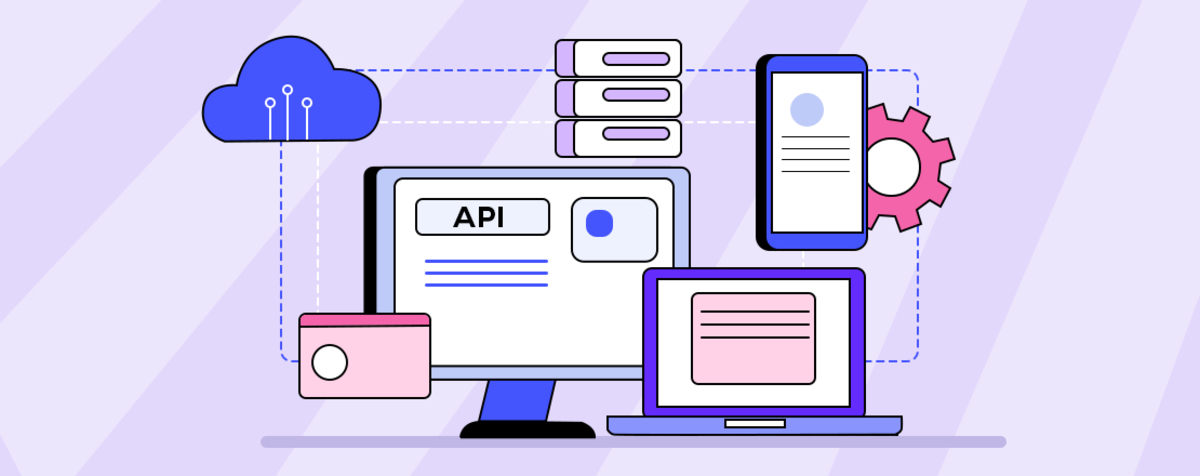
Enhancing System Connectivity with Spagic API Integration
Integrating multiple systems is a critical challenge for businesses aiming to create a unified digital ecosystem. Middleware solutions like Spagic play a crucial role in simplifying these integrations, making it easier for applications to communicate with external services. Whether it’s connecting to payment gateways, CRM platforms, cloud storage, or analytics tools, linking Spagic to third-party APIs enhances system interoperability and streamlines business operations.
With Spagic’s flexible architecture, businesses can bridge the gap between different applications, ensuring secure and efficient data exchange. Understanding the best practices for API integration can help organizations maximize Spagic’s capabilities while maintaining system security and performance. This article breaks down the essential steps to configure Spagic for API connections, discusses key challenges, and explores real-world use cases.
By the end of this guide, readers will have a clear roadmap for integrating Spagic with external APIs, from authentication mechanisms to error handling and performance optimization. A structured approach ensures that businesses can leverage API connections to improve workflows, reduce manual intervention, and maintain data consistency across multiple platforms.
The Role of APIs in Enterprise Integration
APIs serve as the backbone of modern digital connectivity, allowing different applications to interact seamlessly. Businesses rely on APIs for a variety of functions, from pulling real-time customer data to automating transactions. Without middleware solutions like Spagic, managing API connections across multiple systems would require significant manual effort and custom development.
Spagic simplifies API integration by acting as a central communication hub. It processes incoming and outgoing data, translates different data formats, and ensures secure authentication between systems. This makes it easier for enterprises to connect legacy applications with cloud-based services, ensuring smooth interoperability.
With the growing adoption of API-driven architectures, businesses need middleware that can handle complex integration scenarios. Spagic provides the flexibility to support REST, SOAP, and other API communication protocols, allowing organizations to maintain compatibility with a wide range of third-party services.
Setting Up Spagic for API Connectivity
Before integrating Spagic with third-party APIs, businesses must configure their middleware environment correctly. Proper setup ensures secure data transmission and reliable communication between systems. The first step involves defining API endpoints and understanding the request and response structures.
Spagic’s modular framework allows developers to define API calls using configurable components, reducing the need for extensive coding. API requests can be automated to fetch or update data at scheduled intervals, enabling real-time synchronization with external services. Additionally, businesses must configure authentication mechanisms, such as API keys, OAuth tokens, or basic authentication, to ensure secure connections.
By setting up logging and monitoring tools within Spagic, organizations can track API performance, identify bottlenecks, and troubleshoot issues before they impact operations. This proactive approach enhances system reliability and minimizes downtime in API-dependent workflows.
Authentication and Security Considerations
API security is a top priority for businesses handling sensitive data. When integrating Spagic with third-party APIs, organizations must implement robust authentication mechanisms to prevent unauthorized access. Depending on the API provider’s requirements, businesses can use methods such as OAuth 2.0, JWT (JSON Web Tokens), or API key authentication.
Spagic supports secure authentication models, allowing businesses to store credentials securely and transmit data using encrypted connections. Proper access controls ensure that only authorized users and applications can interact with external APIs, reducing the risk of data breaches.
Additionally, rate limiting and request validation mechanisms can be implemented within Spagic to prevent API abuse. By restricting the number of requests sent to third-party services, businesses can avoid exceeding usage quotas and maintain API performance stability.
Handling API Responses and Error Management
API responses can vary based on the request, and businesses must handle different scenarios efficiently to prevent disruptions in workflows. Spagic’s built-in error handling capabilities ensure that failed API calls do not impact overall system performance.
When an API request fails, Spagic can retry the request after a predefined interval or log the error for later review. This ensures that temporary network issues or API outages do not lead to data loss. Error messages can also be analyzed to determine if failures are due to authentication issues, incorrect request formatting, or API downtime.
For mission-critical integrations, businesses can set up fallback mechanisms within Spagic. If a primary API fails, the system can switch to an alternative service or use cached data to maintain functionality. These proactive measures help organizations maintain service continuity even when external dependencies experience issues.
Optimizing API Performance in Spagic
API performance directly impacts business operations, especially when dealing with high transaction volumes. Optimizing API requests within Spagic ensures faster response times and reduced system load. One way to achieve this is through request batching, where multiple data requests are combined into a single API call.
Caching frequently accessed API responses also improves efficiency. Instead of making repetitive calls to third-party services, Spagic can store responses locally and retrieve them when needed. This reduces API usage costs and minimizes latency in data retrieval.
Monitoring API request metrics provides valuable insights into system performance. Spagic’s logging and analytics tools allow businesses to track response times, identify slow endpoints, and fine-tune API configurations for better efficiency. Proactive performance optimization leads to smoother API interactions and improved user experience.
Common Use Cases for Spagic API Integration
Spagic’s API integration capabilities support a wide range of business applications, helping organizations streamline operations, automate workflows, and improve customer interactions. By enabling seamless communication between different software systems, Spagic simplifies data exchange and ensures that businesses can operate efficiently without manual intervention. Its flexibility makes it a valuable tool for companies looking to enhance their digital infrastructure.
One of the most common applications of Spagic is in customer relationship management. By integrating with platforms like Salesforce or HubSpot, businesses can synchronize customer data, track interactions, and automate lead management. In the e-commerce sector, Spagic plays a key role in connecting online stores with payment gateways, inventory systems, and shipping providers, ensuring a smooth shopping experience. Financial services also benefit from Spagic’s capabilities, using it to connect with external APIs for fraud detection, transaction processing, and regulatory compliance.
Beyond traditional business applications, Spagic is widely used in industries that rely on IoT data processing. Manufacturing and logistics companies, for instance, utilize Spagic to facilitate communication between IoT devices and cloud-based analytics platforms. This allows for real-time monitoring, predictive maintenance, and data-driven decision-making. These diverse use cases highlight Spagic’s ability to handle complex API interactions across multiple industries, making it an essential tool for modern enterprises.
Overcoming Common API Integration Challenges
While Spagic simplifies API integration, businesses may encounter challenges such as inconsistent data formats, API rate limits, and security concerns. Addressing these challenges requires a combination of technical expertise and strategic planning.
One common issue is data format mismatches between systems. Spagic’s data transformation capabilities allow organizations to standardize data before sending or receiving API requests. This ensures compatibility between different platforms and prevents integration errors.
Handling API rate limits effectively requires optimizing request frequency and caching responses when possible. Businesses can configure Spagic to prioritize critical API calls and delay non-essential requests to stay within usage quotas.
Security remains a major concern in API integrations. Organizations should regularly update authentication tokens, enforce access controls, and monitor API traffic for suspicious activities. Implementing strong security protocols ensures data integrity and protects sensitive information from cyber threats.
Maximizing the Value of Spagic API Integrations
Integrating Spagic with third-party APIs unlocks new opportunities for business automation, efficiency, and innovation. By leveraging Spagic’s middleware capabilities, organizations can create a connected digital ecosystem that enhances productivity and operational effectiveness.
A well-structured API integration strategy involves continuous monitoring, optimization, and security enhancements. As API-driven workflows evolve, businesses must adapt their integration frameworks to accommodate new technologies and changing industry standards.
With careful planning and implementation, Spagic serves as a powerful tool for simplifying API connections, improving data exchange, and ensuring seamless interactions between business applications. Organizations that invest in robust API integration strategies will gain a competitive edge in an increasingly interconnected world.

